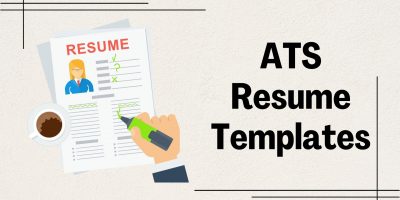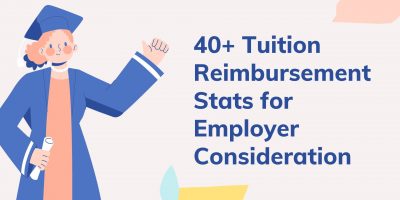
The Power of an Employee Referral
Or how implementing a timeless tactic in the modern workplace can lead to hiring high-quality, engaged, and loyal employees.

Obtaining an academic degree is just one aspect of career development. In fact, the latest internship statistics show that pursuing practical knowledge before employment gives job seekers a competitive edge on the labor market.
Most employers aren’t interested in grades or test results. They want to see skills, a good work ethic, and eagerness to learn.
Internships offer a realistic approach to career exploration and employee experience. They’re a great way to get out of one’s comfort zone and into the world and to soften the blow upon entering the workforce for the first time.
Activity-based learning provides practical knowledge beyond education. And what is an internship if not learning through practice?
Its primary purpose is to enable the skills necessary for any working environment. Whether it’s developing leadership skills early on or getting to know the people in the industry, internships are a step forward in any career.
But as much as they are helpful for students and job seekers, they are also essential for employers. Following the great resignation, employers recognize the potential of interns. They can be a cushion for the labor shortage problem and become next-generation talents.
In a way, recruiting new people with a fresh perspective and unique skills is a long-term company investment.
Following the COVID-19 pandemic, internship numbers plummeted. Many employers canceled their training programs. Those who didn’t cancel shifted towards online attendance.
The good news is that despite all the changes, the value of the professional learning experience remains relevant well into 2022.
Internships can be equally demanding and time-consuming as a permanent job.
It’s only natural to wonder if companies pay for their internships. Rewarding hard work is a significant motivator. So, some form of compensation can go a long way for interns.
Before applying, the main question on any student’s mind is: are internships paid?
The answer, however, depends on several factors. That includes the industry, the specific company, the position candidates are applying for, and even the country’s legal system.
The good news is the majority of interns trade their time for some form of compensation. If it’s not a salary, companies give stipends, academic credit, or cover living expenses. An intern also gets the value of working alongside professionals and building a career network.
A recent survey shows that six out of ten U.S. interns get some form of compensation. Still, the remaining 40% that don’t get paid make up quite the number.
Legally, companies in the U.S. must pay at least the minimum wage unless they pass the primary beneficiary test under the Fair Labor Standards Act. If the test answers imply the intern passes the criteria for an employee, they are entitled to payment under FLSA and vice versa.
Tech, finance, and consulting are among the highest paying industries. Of course, there are exceptions to the rule. After a challenging few years that resulted in a shortage of opportunities, statistics show that the market’s slowly recovering.
High tech pays the best.
The farming, fishing, and forestry industry have some of the lowest demands for internships. The highest demand is in business and financial operations, arts, design, media, and sales.
Check out more of the latest internship industry stats.
In saturated job markets, internships give candidates an advantage. Employers appreciate a rich resume and candidates who already possess some of the necessary skills.
Staffing firms can further ease the process by connecting prospective candidates with their preferred employers. And although extra work in the field can’t guarantee a job, it certainly helps.
Proactive job seekers with some experience under their belt have a much better chance of getting hired. Internship statistics show that most college graduates who interned get at least one job offer after completion.
Hands-on work experience can help students and graduates gain confidence before entering the labor market. Consequently, an internship makes them more assertive about their expertise and salary expectations.
Case studies give an even more detailed overview of the market and discuss the most recent issues, including the changes brought on by the COVID-19 pandemic.
Here are some of the key findings:
The COVID-19 pandemic disrupted the labor market, affecting internships in the process. Canceled opportunities, dissatisfaction, and a high percentage of unpaid labor, to name a few. However, according to some of the latest trends, things are taking a turn for the better.
Internship statistics prove that employers are leaning toward candidates with more practical experience. Regardless of the type of internship, the compensation, or duration, learning how to thrive in a professional setting is invaluable. It’s safe to say that this experiential learning journey gives people an advantage in the workplace and in life.
Browse our curated list of vendors to find the best solution for your needs.
Subscribe to our newsletter for the latest trends, expert tips, and workplace insights!

Or how implementing a timeless tactic in the modern workplace can lead to hiring high-quality, engaged, and loyal employees.

Explore valuable internship insights that offer a realistic approach to pursuing practical knowledge before employment and uncover how it gives job seekers a competitive edge in the labor market.

From remote work integration to cutting-edge recruitment tech, explore the transformative shifts in the staffing industry.

Evaluate the significant tuition reimbursement statistics, enabling informed decisions on educational benefits for your workforce.
Shortlister Connect is a tool specifically designed to be utilized by the HR and Procurement/Sourcing teams within mid-size, large and jumbo employers. Shortlister Connect allows these teams to efficiently research & identify their optimal vendor partners, track existing vendor relationships & performance and “connect” with other employers to share successes and vendor experiences.
If you are not on the HR or Procurement/Sourcing team within an employer with over 200 employees, you will not be granted access to Connect. Examples of individuals that would not be granted access include, but are not limited to: vendors, students, practitioners, researchers, other non-employers or anyone that is unwilling to identify themselves will not pass our vetting criteria. If you are a consultant, Shortlister offers a specialized product for consultants, called Shortlister Select. You can email Tom Ciccotti at tciccotti@myshortlister.com to learn more about Shortlister Select.
***Shortlister retains the exclusive right to grant or deny access to any party to ensure the privacy of the vendors in our system.
Please login with your LinkedIn Credentials
Used by most of the top employee benefits consultants in the US, Shortlister is where you can find, research and select HR and benefits vendors for your clients.
Shortlister helps you reach your ideal prospects. Claim your free account to control your message and receive employer, consultant and health plan leads.